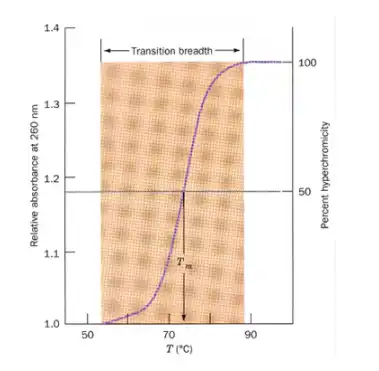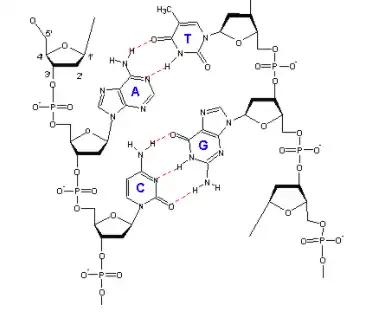DURFing Around
Omer Cohen describes his experience researching DNA as a DURF grant recipient.
The Dean’s Undergraduate Research Fund, or DURF for short, is the perfect opportunity for you to acquire an experience that will set you above countless peers from the rest of the world who will be also be applying for that job, that internship, or that graduate school program that you so desperately desire. It is a program where you get to take the skill set you’ve obtained over the semesters in the various courses you’ve taken and apply them to get a hands-on experience. And the best part? You get to design the research. The DURF program receives applications halfway through the spring semester of each academic year and requires a faculty advisor willing to mentor you through your research, along with a letter of endorsement, a research proposal, your transcript, a one-page bio of yourself, and your resume. If the DURF committee approves your research, you will be given a 1000USD stipend in two allotments provided that you complete your research in time (though twenty percent is cut for taxes). You can apply individually or in groups, and apply for up to 500USD more for acquiring equipment to conduct your research. In order to receive the second allotment of the stipend, you are required to submit a ten minute video summarizing your research and what you learned (group efforts are required to submit a fifteen minute video), which will be put on the DURF website for all to see, and participate in a research symposium the following year. For the many sophomores who will be studying abroad the following year, participation via video conference is allowed.You should note that you do not need to make any groundbreaking discoveries in order to receive the second part of your research stipend. In fact, your research can be a complete failure, but as long as you conduct it according to the guidelines you set, which were approved by the DURF committee, and consistently meet with your advisor, you’re good to go. This year the DURF committee approved fifty-three different projects for approximately seventy-five people, with projects ranging from “Characterizing HIV Risk Factors Among Men Who Have Sex with Men (MSM) Who Use the Geosocial-networking Application Jack'd in Shanghai” to “Quantum Computing with Atomic Chips.” This is a sharp increase from last year’s eighteen approved projects, which was very likely possible due to the cut in costs of the DURF recipients’ stipends. For a complete list of this year’s projects, click here.As a DURF recipient myself, I conducted a project titled “Dynamic Study of DNA Using UV Spectroscopy.” I worked with Professor Lu Zhang in the Shanghai campus chemistry lab over the summer to learn more about the different factors that govern DNA stability and how we can use variations in sequences along with highly sophisticated machines to elucidate their structures.The research began with getting familiar with the equipment, procedures, formulas and theory of the project. We annealed strands of DNA together and then melted them in a machine that shines UV light on samples as it heats them and records the data to produce sigmoidal curves.

The midpoint of the sigmoidal curve is the point at which half of the DNA strand is bound and half is unbound, and is also known as the melting point of that DNA strand. Melting points can be used as a measure for stability; since more energy is needed to melt DNA strands with higher melting temperatures, they are more stable. This is important because there is a fair amount of research that shows that cancerous DNA, or DNA with genes that have mutated sequences that lead to uncontrollable growth, that melts at lower temperatures will have a high efficiency of repair. A form of repair known as Nuclear Excision Repair (NER) basically finds cancerous DNA, signals for enzymes to cut the mutated sequences, after which another enzyme (DNA Polymerase) comes to fill in the gap with the correct sequence. Thanks to the generosity of Nick Geacintov, NYUSH’s Vice Dean of Sciences, I was provided with DNA strands that contained Polycyclic Aromatic Hydrocarbon (PAH) adducts. These are common environmental pollutants and byproducts of incomplete combustion reactions such as smoking which bind to DNA and alter sequences. If these alterations are not picked up by NER enzymes, then the mutation is propagated during DNA replication, and the mutations manifest themselves, leading to cancerous growth. I melted identical DNA strands with and without these PAH-induced lesions and showed that when there is something that destabilizes DNA, it will indeed melt at a lower temperature. The next part of my experiment came when I wanted to understand the varying factors that govern DNA stability. As many who have taken Biology and Chemistry classes before know, the two DNA strands that form a DNA double helix are held together by a weak form of bonding known as hydrogen bonding. DNA has four basic nucleotides that repeat throughout with the same pairs, A, T, C, and G. A will only bind to T and C will only bind to G.

Because CG pairs have 3 hydrogen bonding sites (shown in dashed lines in the picture) compared to the 2 hydrogen bonding sites of AT pairs, DNA strands of comparable lengths with a higher concentration of CG pairs will be more stable. I wanted to test how the arrangement of these pairs will affect stability, and ordered DNA strands from an industrial factory with identical amounts of CG pairs but arranged them in different order.For more details about my research project, you can view my DURF video here.Overall, DURFing is a great experience. You get to have a lot of fun and at the same time learn from an experienced mentor. It is definitely a character-building experience that will prepare you for whatever you decide to do after college. For those who decide to DURF in Shanghai, you get to DURF around with other DURFers and learn about the amazing things they are DURFing on over lunch. It is one of the opportunities that makes NYU Shanghai’s tiny student body an advantage compared to NYU New York’s tens of thousands. Especially for STEM fields, where post-undergraduate positions that you will be applying for tend to value experience over academic performance (though don’t give up on FoS grades just yet), the DURF program is an invaluable opportunity that must be taken advantage of.This article was written by Omer Cohen. Please send an email to managing@oncenturyavenue.com to get in touch. Photo Credit: Omer Cohen